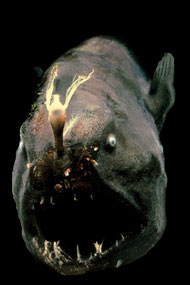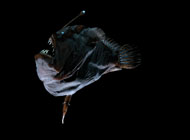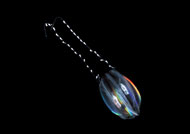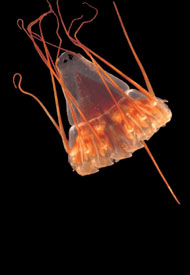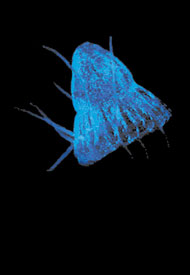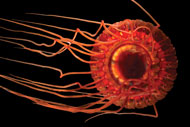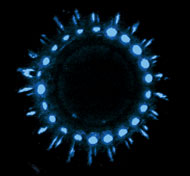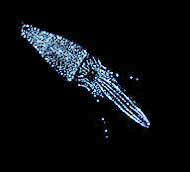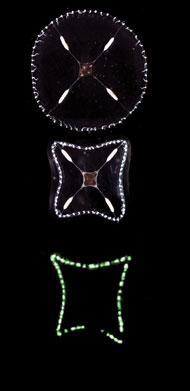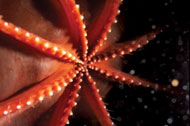 |
 |
||||||||||||||
| features The Kid Who Didn’t Stand God Bless Amerigo Oceans of Light The Best Things Since Sliced Bread columns jumbolaya planet tufts newswire the big day departments |

Oceans of Light
A deep-sea explorer, winner of a 2006 MacArthur “genius grant,” is solving the mysteries of a strange, luminous realmIn the early 1980s, fresh out of graduate school, I had an opportunity to pilot a self-propelled deep-diving suit, the Wasp, that could travel 2,000 feet beneath the waves. That experience opened my eyes to the amazing creatures that use bioluminescence—chemically produced light—to survive in the ocean.
On land, animals that can glow, à la fireflies, are rare. At sea, they are the rule rather than the exception: 80 to 90 percent of creatures in the open ocean make light. Although in coastal waters only about 10 percent of species are bioluminescent, they can occur in vast numbers, like the glowing dinoflagellates that cause some red tides. I realized after that first dive in the Wasp that bioluminescence had to be one of the most important processes in the ocean, and I wanted to learn everything I could about it.
I have spent much of my career working with engineers to develop instruments that help me study how animals use their light-making ability to find food, attract mates, and defend against predators. Recently, through a nonprofit I founded called the Ocean Research & Conservation Association (www.oceanrecon.org), I have begun exploring another dimension of light: bioluminescence is one of several indicators we can monitor to determine the health of ocean ecosystems.
To study bioluminescent creatures close up, we must catch specimens at icy depths—sometimes thousands of meters down—and bring them up to a research ship without killing them in the warm surface water (the huge pressure difference is less of a problem, because few of these animals have air-filled sacs to overinflate). We have two ways of collecting them. One way is to use a net outfitted with an insulating device. The other is to pilot a submersible that scoops up specimens in sealed Plexiglas cylinders. Aboard ship, I study the animals in a darkroom equipped with special cameras that work in dim light and are ultrasensitive to blue, the most popular color for ocean bioluminescence.

